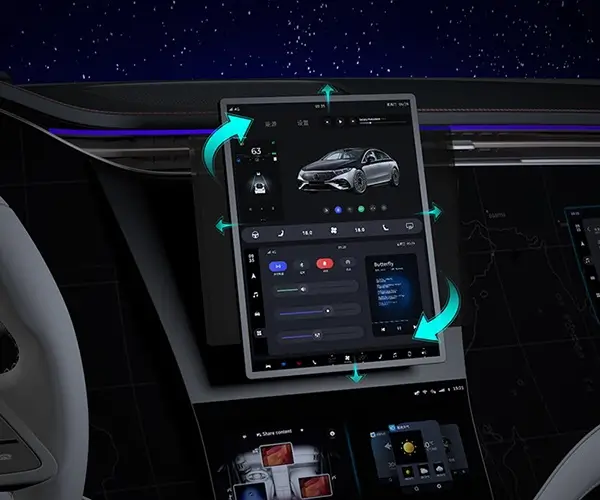Introduction: Setting the Stage for Servo Motor Mastery
Imagine a machine that can turn, tilt, and position objects precisely, all controlled with a simple command—no, not a spaceship, but a servo motor managed seamlessly by an Arduino microcontroller. This tiny wheel of potential is what enables countless robotic applications, from animatronics to industrial automation, and it's remarkably accessible, even for beginners.

Before diving into the coding and wiring, it’s helpful to understand what a servo motor actually is. Unlike standard motors that run continuously, servo motors are designed for position control. They use feedback mechanisms to achieve specific rotational angles, making them ideal for applications needing precise positioning.
In essence, a servo motor contains a small internal control circuit, a motor, a gear train, and a position feedback sensor such as a potentiometer. When you send a signal (often a PWM signal) to the servo, it moves to the corresponding position, stops, and holds that position with force.
Why Use Servo Motors with Arduino?
Arduino, an open-source microcontroller platform, makes it straightforward to control servo motors. Its simplicity, combined with the rich ecosystem of libraries and community support, turns complex robotics tasks into manageable projects. Whether you're building a robotic arm, a camera gimbal, or an automatic door, programming a servo with Arduino is the foundational step.
Getting Started: What You Need
Before programming, collect your components:
Arduino board (Uno, Nano, Mega, etc.) Servo motor (common brands include SG90, MG996R) Jumper wires Breadboard (optional) Power supply (if driving multiple servos) Computer with Arduino IDE installed
Once you have the materials, it's time to wire up and test your servo.
Wiring the Servo Motor to Arduino
Typically, a servo has three wires:
Power (usually red) Ground (black or brown) Signal (white or orange)
Basic wiring steps:
Connect the red wire of the servo to the 5V pin on Arduino. Connect the black or brown wire to GND. Connect the signal wire to a PWM-capable digital pin on Arduino (commonly pin 9).
Note: For multiple servos or high-current applications, use an external power supply to avoid overloading the Arduino's 5V pin.
Using the Arduino IDE to Control a Servo
With wiring complete, you’re ready for coding. Arduino's IDE has a built-in servo library that simplifies control tasks.
Here's a simple example sketch:
#include Servo myServo; // create a servo object void setup() { myServo.attach(9); // attach servo to pin 9 } void loop() { myServo.write(0); // move to 0 degrees delay(1000); // wait 1 second myServo.write(90); // move to 90 degrees delay(1000); myServo.write(180); // move to 180 degrees delay(1000); }
This code swings the servo from 0° to 180°, pausing briefly at each position. When uploaded, you should see your servo rod smoothly transition through these angles.
Understanding PWM and Servo Control
Servos rely on Pulse Width Modulation (PWM) signals to determine position. Each position corresponds to a specific pulse width, typically between 1ms (0°) and 2ms (180°), repeated every 20ms. The servo library abstracts this complexity, allowing you to specify angles directly with write() functions.
Calibration and Testing
Once your servo responds, experiment with different angles to see its range of motion. Keep in mind; most standard servos have a physical limit of approximately 180°, but some may have a smaller or larger sweep. Be cautious not to push beyond the physical limits to avoid damage.
Fundamental Programming Concepts for Servo Control
To advance your projects, try implementing features like:
Sweep motion: smoothly moving from one angle to another Random positioning: testing response times and repeatability Sequential control: orchestrating multiple servos for complex tasks
Implementing Smooth Motion
Achieving smooth movement can involve gradually changing the servo angle in small increments within a loop, creating fluid transitions. Here’s a simple example:
for (int pos = 0; pos <= 180; pos += 1) { myServo.write(pos); delay(15); // wait 15ms for smooth speed }
This incremental approach enhances the quality of your control system, making movements more natural and less jerky.
Handling Power and Mechanical Limitations
Driving servos isn't solely about coding; power management is vital. Servos draw considerable current during movement, especially when under load. Ensure your power supply can handle the demand, and consider using a separate power source for multiple servos. Also, mechanical bottlenecks, such as physical stops or attachments, influence the range and speed of the servo.
Troubleshooting Common Problems
Servo jittering: often caused by insufficient power or noisy signals; try using a dedicated power supply. Servo not responding: check wiring, code syntax, and pin assignments. Overheating or stalling: don’t run servos at their limits for extended periods; incorporate pauses and avoid overloads.
This wraps up the first section of our deep dive into programming servo motors with Arduino. Next, we’ll explore more advanced control techniques, sensor integration, and real-world project ideas to bring your robotic concepts to life with precision and finesse. Stay tuned!
Kpower has delivered professional drive system solutions to over 500 enterprise clients globally with products covering various fields such as Smart Home Systems, Automatic Electronics, Robotics, Precision Agriculture, Drones, and Industrial Automation.




































